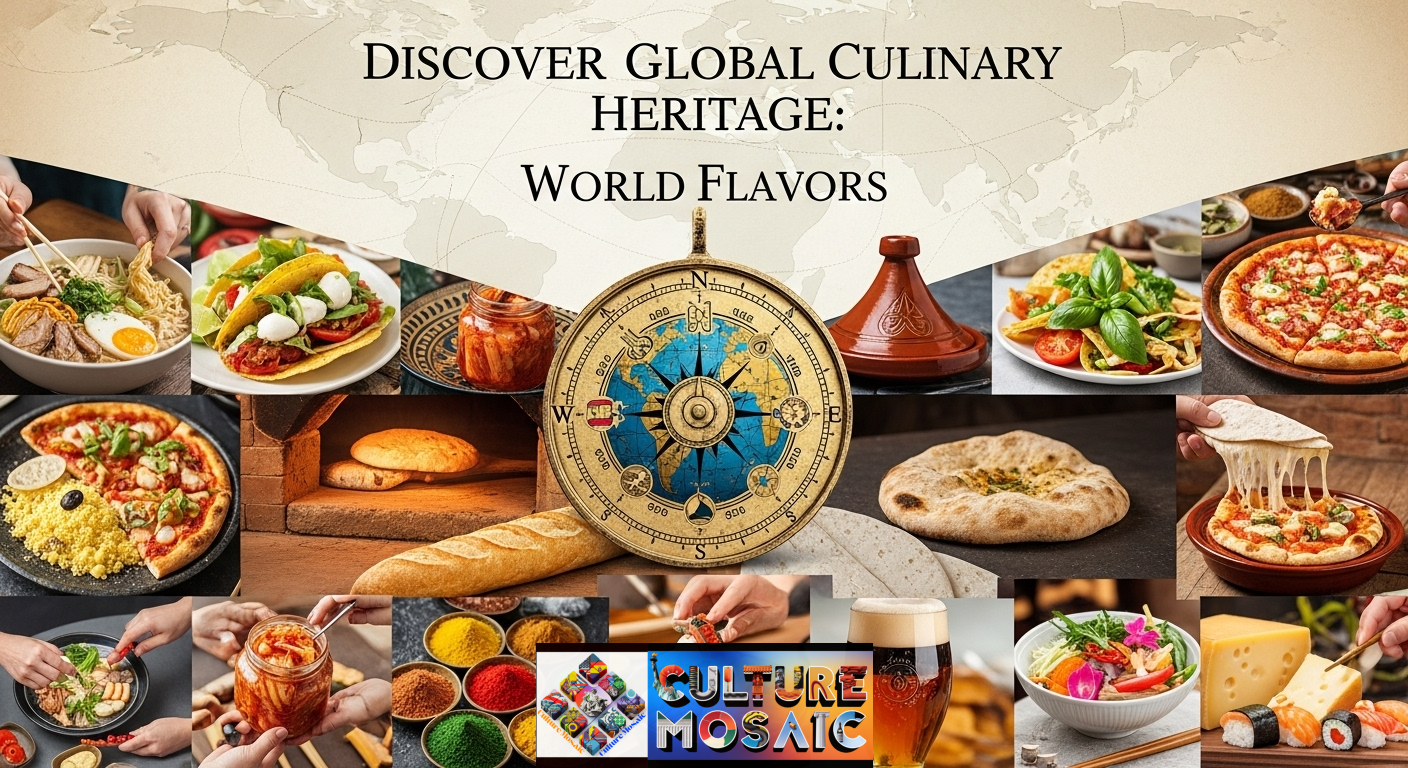In a world where food connects us with boundaries, global culinary heritage represents rich stories, techniques, and materials passed through generations. It is more than cuisine—it is a reflection of history, environment, and community. On September 21, 2025, as we celebrate cultural diversity amidst increasing interest in permanent food, the discovery of the global culinary heritage reminds us how to divide food and preserve identity.
From ancient spice routes to modern kitchens, this inheritance shapes what we eat and why. Whether you are eager about your own roots or are eager to try something new, let’s travel through your layers and draw from traditions recognized by UNESCO and beyond.
What Defines Global Culinary Heritage?
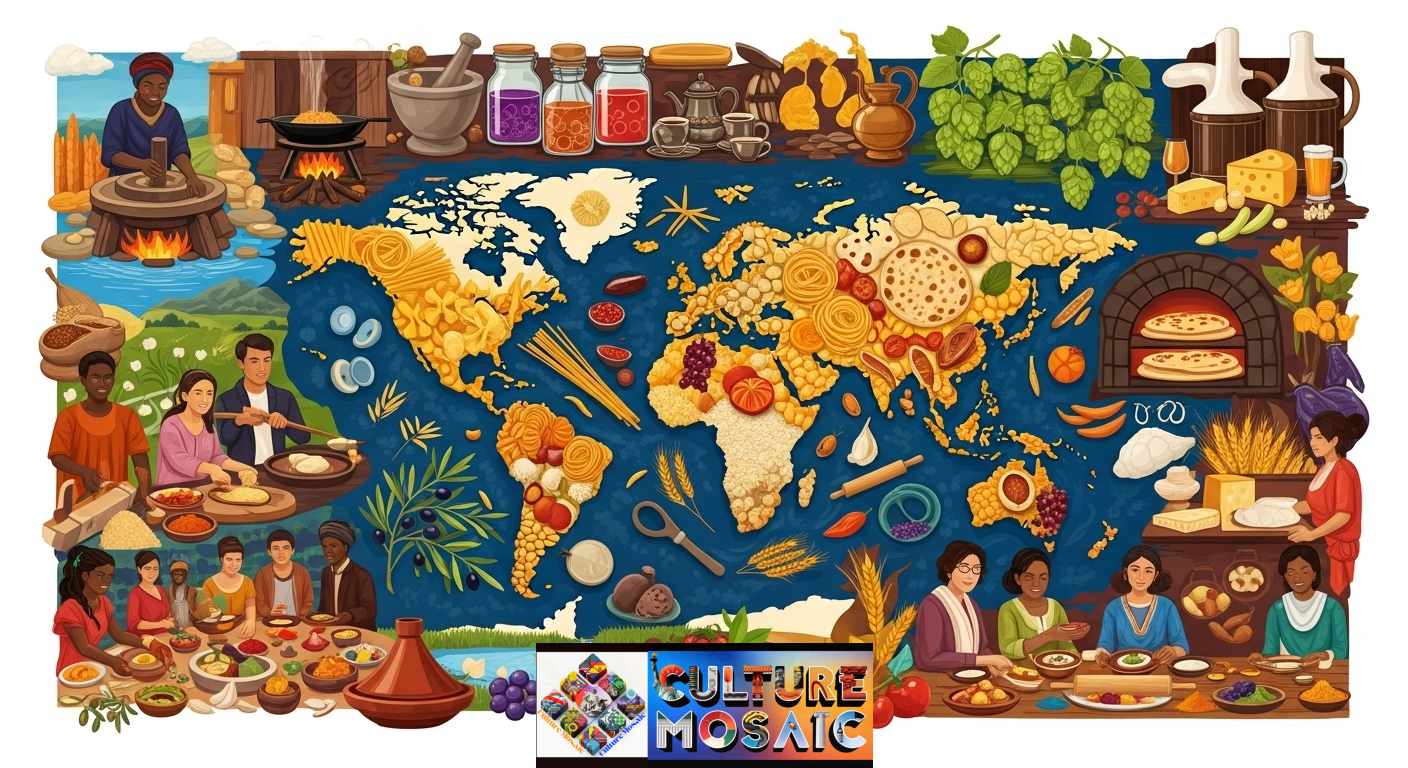
Global culinary heritage incorporates traditional foods, cooking methods, and customs that define cultures worldwide. It is often associated with the geography, climate, and social practices of a place, which develop over time while maintaining the core elements. UNESCO plays an important role here, linking some dishes as abstract cultural heritage to protect them from disappearance. For example, it recognizes not only the dishes but also the rituals around them, such as communal preparation or seasonal function.
This inheritance includes everything from staple grains in Africa to fermented foods in Asia, stating how to maintain foods and bonds. It is dynamic—ready for migration and trades – yet lies in authenticity. Understanding this helps us appreciate a simple flatbread in Armenia or a beer culture in Belgium. In short, the global culinary heritage is the shared table of humanity, where each culture combines its unique taste.
Historical Roots of Culinary Traditions
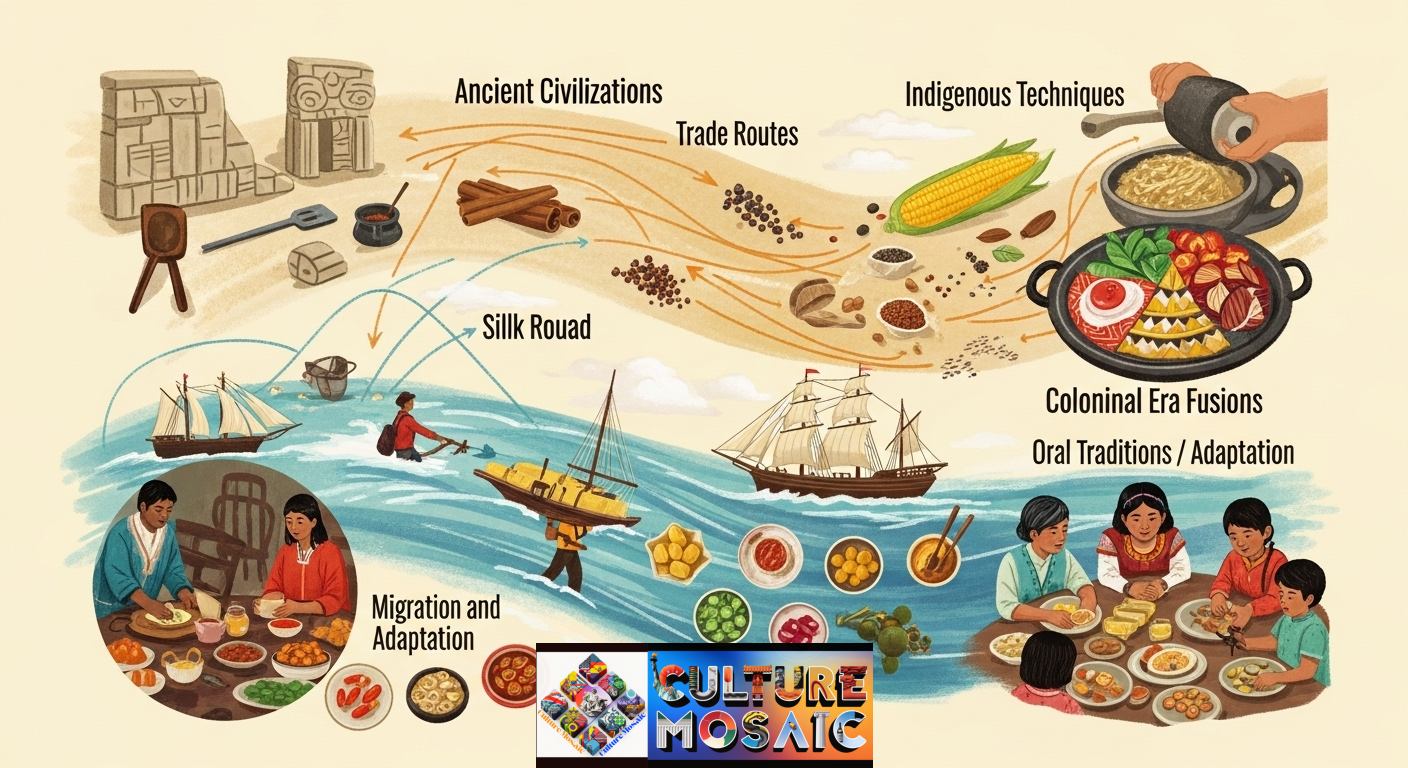
The foundation of global culinary heritage returns to ancient civilizations and business networks. For example, spices such as cinnamon and black pepper spread from the Silk Road, Asia to Europe, which today we know that the taste of taste in dishes. In the US, indigenous people developed techniques such as nixtamalization for Corn, which affected Mexican recipes long before European contact.
The colonial ages added layers, as was seen in the Petanakan meal in Southeast Asia, fusing Chinese and Malay elements. For centuries, the escape carried the cuisine in the oceans—the Italian immigrants were given the U.S. in the Caribbean Jerk seasoning. Or brought pizza in African influences. These histories show how the global culinary heritage is not stable; it is a living record of human movement and adaptation, protected through oral stories and family food.
Examples of Global Culinary Heritage Around the World
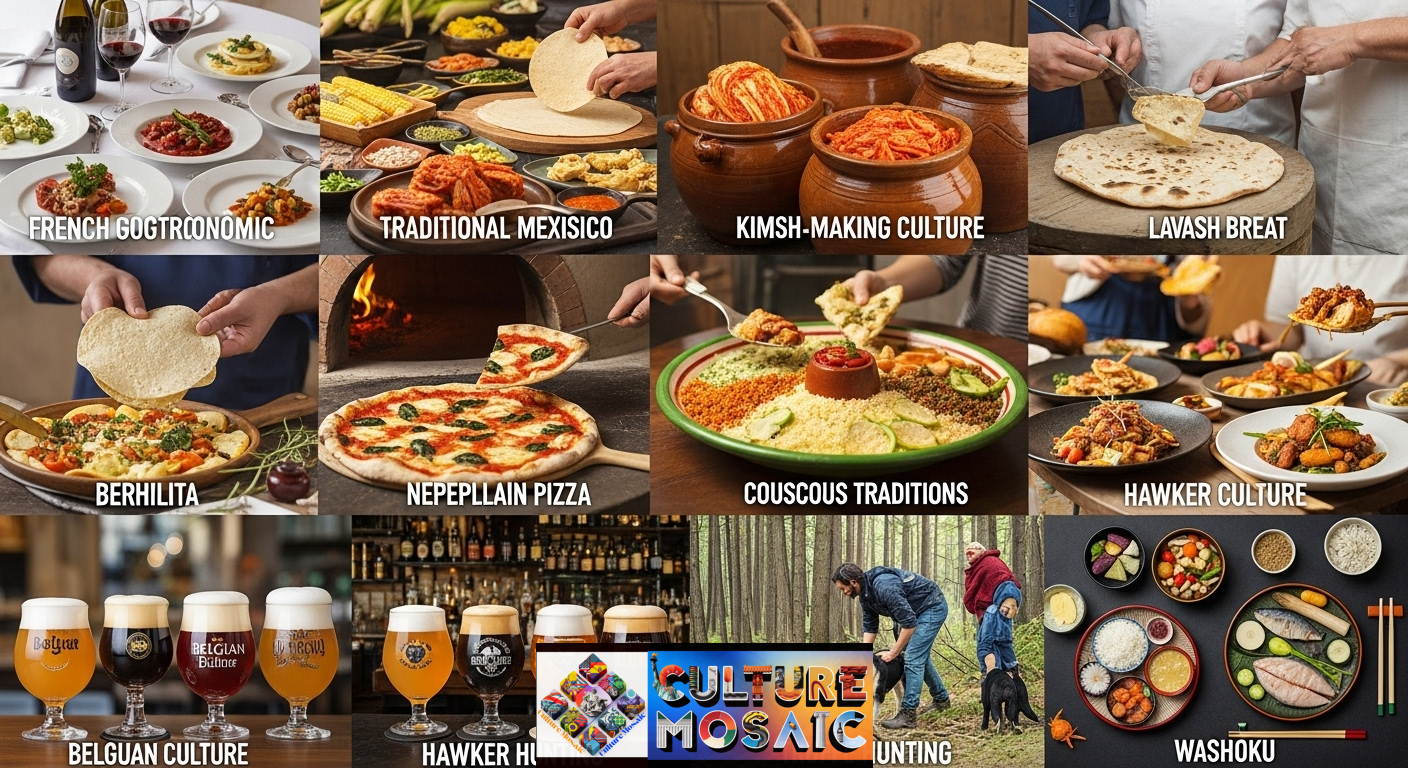
To understand the global culinary heritage, consider these diverse traditions, many of which are on UNESCO’s abstract cultural heritage list. They say that food is a symbol of cultural values from community to craftsmanship. Here is a table of selected examples, spreading continents and highlighting major features:
| Tradition | Region/Country | Key Elements | Cultural Significance |
|---|---|---|---|
| Gastronomic Meal of the French | France | Multi-course meals with wine pairings, emphasizing fresh ingredients and social rituals. | Celebrates life’s milestones through shared dining, promoting balance and pleasure. |
| Traditional Mexican Cuisine | Mexico | Corn-based dishes like tortillas and moles; community preparation. | Roots in ancient Mesoamerican practices, fostering family bonds and seasonal cycles. |
| Kimchi-Making Culture | Korea | Fermented vegetables with chili and garlic; winter preparation rituals. | Symbolizes resilience and health, passed down through generations. |
| Lavash Bread | Armenia | Thin flatbread baked in clay ovens; communal baking. | Represents hospitality and unity, often shared at gatherings. |
| Neapolitan Pizza | Italy | Simple dough, tomatoes, mozzarella, and wood-fired baking. | It embodies artisan skill and everyday joy, a staple of street food culture. |
| Couscous Traditions | North Africa (e.g., Morocco, Algeria) | Steamed semolina with meats and veggies; group cooking. | Fosters social ties and adaptability across nomadic and settled lifestyles. |
| Belgian Beer Culture | Belgium | Diverse brewing methods, glassware, and pub rituals. | Highlights craftsmanship and conviviality in social settings. |
| Hawker Culture | Singapore | Street food stalls offering fusion dishes like chili crab. | Blends immigrant influences, promoting affordable, communal eating. |
| Truffle Hunting | Italy | Foraging for white truffles with dogs; seasonal hunts. | Connects to nature and regional pride, used in gourmet dishes. |
| Washoku | Japan | Balanced meals with rice, fish, and veggies; seasonal focus. | Emphasizes harmony with nature and mindful eating. |
These examples show the breadth of global culinary heritage, from everyday staples to festive rituals, each preserving cultural narratives.
The Importance of Preserving Global Culinary Heritage
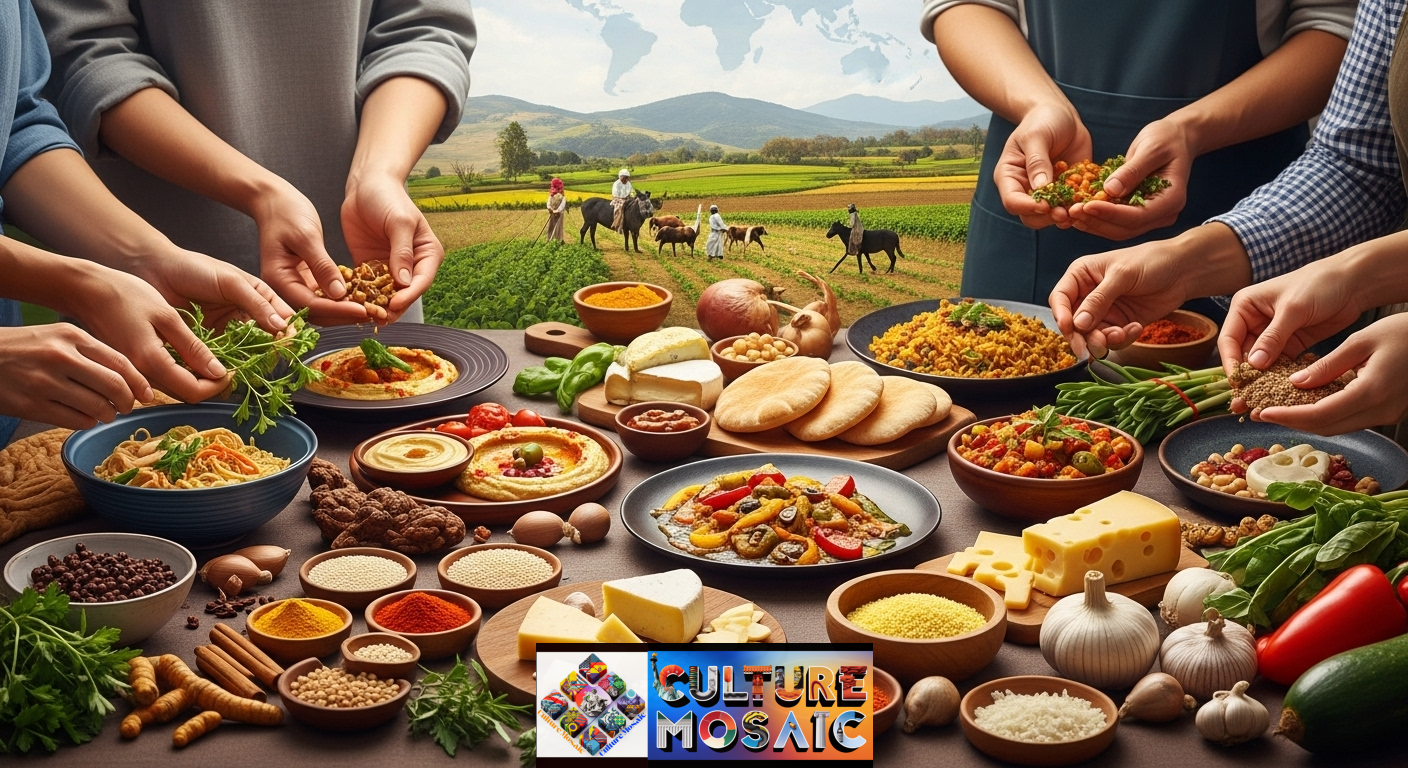
Protecting global culinary heritage goes beyond taste; it is essential for cultural identity, biodiversity, and health. Traditional foods often utilize local, seasonal ingredients, supporting ecosystems and reducing carbon footprints. They also bolster economies through tourism and artisan crafts, such as cheese-making in Europe or masala farming in India.
Heritage cuisine promotes a balanced diet, as seen with the McMachi Ed style, which supports health. Similarly, Mediterranean diets are associated with a lower risk of disease. On a social level, these cuisines encourage understanding and connection; sharing food helps break down barriers and fosters empathy. In 2025, amidst food insecurity, it is essential to pass down this knowledge to future generations. We can preserve tradition while incorporating innovation to ensure sustainable food practices.
Challenges Facing Global Culinary Heritage Preservation
Despite its importance, the global culinary legacy faces significant challenges. Globalization promotes fast food and undermines traditional practices, putting 70% of culinary traditions at risk of extinction due to industrial options. Climate change also impacts food production, affecting crops like coffee and rice.
Urbanization contributes to the loss of culinary knowledge, as younger generations often abandon family recipes. Economic pressures favor mass production over artisanal methods, and cultural biases undervalue non-Western dishes. Additionally, documentation efforts and community events are hindered by funding limitations.
To address these issues, it is essential to support community efforts, enhance education, and implement policy assistance to preserve culinary heritage.
Future Trends in Global Culinary Heritage for 2025
In 2025, global culinary heritage is evolving with trends such as fusion cuisine, where the “border” menu blends Korean and Mexican flavors. The focus on sustainability encourages a plant-based twist on classic dishes, aimed at preserving biodiversity.
Technology also plays a role in this evolution: AI is used to document recipes, while virtual reality platforms help chefs refine their skills. High-protein heirloom foods, like ancient grains, are gaining popularity for their health benefits. Additionally, relaxation foods with diverse origins offer a respite from stress, while environmentally conscious options emphasize the importance of local sourcing. Dining experiences are adapting to honor individual heritage and are flourishing in modern contexts.
Conclusion: Embracing Global Culinary Heritage Today
Global culinary heritage is a valuable collection of flavors and stories that connect us to our past and guide our future. By exploring and preserving these traditions, we enrich our lives and our communities. In 2025, consider trying a new recipe from a different culture or supporting local artisans—it’s a delightful way to celebrate diversity. Let’s ensure this heritage continues to thrive for generations to come.
FAQs
1. What is global culinary heritage?
Global culinary heritage refers to traditional foods, cooking techniques, and eating customs from cultures worldwide, often preserved as intangible cultural assets by UNESCO.
2. Why is preserving global culinary heritage important?
It maintains cultural identity, supports biodiversity, promotes health through balanced diets, and boosts economies via tourism and local production.
3. Can you give examples of UNESCO-recognized culinary traditions?
Examples include the gastronomic meal of the French, traditional Mexican cuisine, Korean kimchi-making, Armenian lavash, and Neapolitan pizza.
4. What challenges threaten global culinary heritage?
Threats include globalization favoring fast food, climate change affecting ingredients, urbanization causing knowledge loss, and economic shifts toward mass production.
5. What are emerging trends in global culinary heritage for 2025?
Trends include fusion cuisines, sustainable plant-based adaptations, technology for preservation, high-protein heritage foods, and eco-conscious sourcing.

